articulating a new lineage in yoga
118 yoga actions
to help you
deepen& expand
your yoga practice
articulating a new lineage in yoga
to help you
deepen& expand
your yoga practice
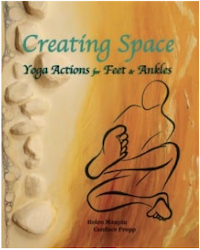
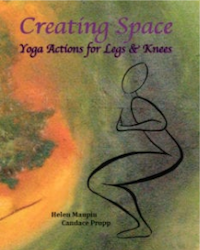
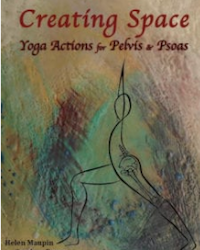
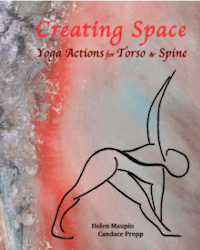
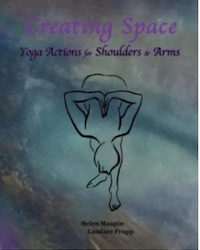
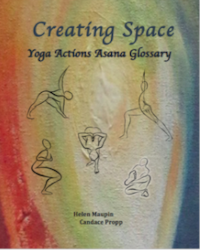
Becoming familiar with the sensations in your body and mind that signal ease as well as discomfort and dissatisfaction.
Applying yoga actions to your areas of pain, suffering, confusion and paralysis in order to reveal new understanding and direction.
Adopting those yoga actions that bring your whole being (mind-body-spirit) into alignment.
Most yoga practitioners reach a point where they want deeper understanding.
Whether you are brand new to yoga, an advanced practitioner or a senior yoga teacher, every yoga pose (asana) reveals to you where your tension, tightness, pain and suffering are located in your body. Each body is unique so this can and does appear differently to each person.
As a beginner yogi, you may initially feel these sensations at the level of your skin, flesh and muscles. For instance, when you do Adho Mukha Svanasana (Downward Dog), where do you feel sensation—hamstrings, arms, upper back? With regular asana practice and the application of yoga actions, your awareness of sensation will move deeper into your muscles, bones, organs and nervous systems. As you move deeper into your body and mind, you move closer to understanding the source of any tension, tightness, pain and suffering that is showing up for you.
With the aid of deeper awareness, appropriate yoga actions and a disciplined asana practice, beginner, intermediate and advanced yoga practitioners become adept at —
liberating their energy (prana or life force) and breath, and
moving both throughout all the layers of their being—skin, flesh, muscles, bones, organs, parasympathetic and sympathetic nervous systems, etc.
The value of this deep capacity for guiding life force and breath to penetrate all of your cells increases the efficiency and effectiveness of your entire being. You grow to know how to heal yourself.
Yoga Actions are internal isolated movements — muscular, skeletal, breath, organic and energetic — for stabilizing, energizing and creating space, ease and well-being. With time and practice, you refine your inner awareness of the yoga action until you feel its reverberation throughout your entire being.
From the creative ingenuity of our own teachers as well as our own practice experience, we gathered together hundreds of yoga actions and passed along our favourites to our students. Some concrete examples are provided below:
A muscular yoga action: Stabilize the elbow joints by drawing the skin, flesh and muscles of the lower and upper arms toward these joints.
A skeletal yoga action: Centre and ground the femurs into the hip sockets by using your awareness to create space around the heads of the femurs as they sit in the sockets.
A breath yoga action: On each inhaled breath, notice how the tailbone moves away from the core of the body. On each exhaled breath, notice how it moves back toward the core. The movement of your tailbone affects your entire spinal column.
An organic yoga action: To free the upper lungs for breath expansion, soften and broaden the “eyes of the chest” and feel their energetic connection to the outer edges of the shoulder blades.
An energetic yoga action: On each inhale, sense the sacrum and tailbone moving away from the core of the body. On each exhale, maintain this fullness in the sacrum, and sense the tip of the tailbone moving back toward the core, thereby initiating the lift of energy up the spine and the lift of the pelvic floor (Mula Bandha). This energetic lift reduces the effort required from muscles, bones, breath and organs. The less effort, the less aging.
Not unlike the actions described above, the 118 Yoga Actions illustrated in the study guides develop your single-pointed focus. In essence, improving your ability to concentrate in the present moment vastly improves your capacity to create space for greater stability, energy and ease in your life and your yoga practice. Concentrating on one thing in isolation defines Pratyahara (withdrawal of the senses from the outer world) and Dharana (concentration), which are two of the eight limbs of yoga necessary for deep meditation (Dhyana).
In practical terms, as a yoga teacher, I could demonstrate Adho Mukha Svanasana (Downward Dog) and then ask you to take the pose. This is a classical teaching method. However, it typically leads you to focusing on trying to get your body into the shape I demonstrated. And, as we can see in the world around us, body shape is almost as unique as thumb prints. Very few are the same. Your body’s version of AMS will not be the same as mine.
So, in order to take this uniqueness into consideration, as a teacher I can demonstrate in AMS, “finding the four corners of my/your hands and feet”. This focus on the action leads you to grounding these “ sixteen foundations” of the pose into the earth. The resulting greater stability, alignment and ease throughout your entire body emerges from the union of focused awareness and action. Finding the four corners of your hands and feet is one of the many yoga actions you will find explicitly described, demonstrated and illustrated in the study guides.
Each Yoga Action consists of —
a detailed description and illustration of the action
1 to 2 Pre-poses that demonstrate the action
5 to 10 Peak and Plus poses that practice the action while gradually increasing your challenge and depth of understanding
2 to 3 post poses that release, relax and integrate your practice
Develop and expand your own personal yoga practice in order to heal yourself.
Awaken to the inner workings of your body and mind
Consistently grow stability and ease within all areas of your being
Consistently grow stability and ease within all areas of your being
Consistently grow stability and ease within all areas of your being
Consistently grow stability and ease within all areas of your being
Diagnose the symptoms of your “stuckness”
Create your own practice based on your specific needs and internal imbalances
Penetrate deeper levels of awareness and transformation
Balance your body-mind experience through integrated practices
Open the channels that directly connect us to our spirit (true self, source, etc.)
Expand your teaching toolkit with 118 yoga actions and sequences.
Utilize countless options for altering and propping a pose to best suit the needs of your students
Use Yoga Actions to design new sequences for your beginner, intermediate and advanced students
Amplify your students’ awareness of their inner workings—body, breath, mind, spirit
Offer your students direct experience of their whole being and potential
Our Yoga Actions study guides take you beyond the shape of a pose and awaken you to your inner experience. As you deepen your understanding of your inner experience, you reveal what is needed to break through your blockages and keep you moving forward.
Four Corners of the Hands & Feet (directly from the book)
Balancing the pelvis (directly from the book)
For some, yoga appears to be a pretzel-bending physical practice meant for those with flexible bodies. This is far from the truth. Yoga postures emerged, at least two thousand years ago, in response to an understanding that tension, tightness and painful suffering can be alleviated and eliminated by tapping into the body’s cellular healing capacity and the spirit’s wisdom.
Unfortunately, we are often too busy or too blind to pay attention
Yoga poses (asanas) help us to discover where our pain and tension lie. As an example, when you take Uttanasana (Standing Forward Fold), you may feel sensation in your hamstrings or your hips or several other locations. Yoga actions, such as release the thigh bone back and the shin bone forward, take us deeper into our inner experience of these sensations. With this deeper awareness, we find ourselves closer to the source of our suffering.
In all likelihood, the tight hamstrings or hips are symptoms of a deeper distress. We develop these compensation patterns to distract or divert our attention away from the deeper issues in our tissues. So, as yogis, we initially follow the more superficial sensations of these symptoms, which eventually lead us deeper and deeper into their source. When we positively affect the source of our suffering, we eliminate all the negative, painful symptoms associated with it. Yoga actions enable healing by concentrating our awareness in the present moment closer and closer to the source of our suffering. Through this intimate mindfulness of our direct experience, we learn what our truth is and affect positive change.
Our six-volume series of print and e-books emphasize 118 primary yoga actions for such areas in our bodies as … Feet and Ankles, … Legs and Knees, … Pelvis and Psoas, … Torso and Spine, … Shoulders and Arms. In addition, the Yoga Actions Glossary includes well over 800 photos of poses categorized as Standing, Forward Bends, Inversions, Backbends, Twists, Seated, Core Strength, Hip Openers, Shoulder Stabilizers/Openers, Restorative, Partners and Knee Support. Both English and Sanskrit names are indexed for each pose.
Within every volume, each action is described and visually demonstrated through a Pre Pose. What follows is a practice sequence of Peak and Plus Poses to further expand your experience of the action. Finally, we end each sequence with Post Poses to fully relax your body and integrate your yoga action and asana experience. In our e-book editions, when you click on the photo image of any pose, you link to the glossary of asanas providing its English and Sanskrit names.
The beauty of each described yoga action is you can use it in any pose. This is how we make yoga accessible for everyone. Our approach is not to teach you how to strive for excellence in each pose, but rather to dig deeper into your inner experience and awareness. Yoga actions awaken us to every aspect of our being—spiritual, physical, intellectual, communal and emotional (S.P.I.C.E.) or in yoga vernacular—Annamaya, Pranamaya, Manomaya, Vijnanamaya and Anandamaya Koshas. By applying yoga actions—muscular, skeletal, breath, organic and energetic—you experience transformation from the inside out and the outside in.
As a starting point, we suggest you read the yoga action and apply it using the Pre Pose. You may not immediately feel the action in your body, but continue using it for the sequence provided (Peak Poses and Plus Poses). In our own personal experience of practising with yoga actions, it could take two or three poses or a full practice before awakening the area of emphasis. Gaining patience and personal commitment are two significant rewards emerging from the many wonders of a yoga practice.
Follow the study guides from beginning to end for a whole body practice starting with Feet and Ankles and working your way up—Legs and Knees, Pelvis and Psoas, Torso and Spine, Shoulders and Arms, Glossary.
Identify a specific problem you are having (soreness in your shoulders) and choose the Shoulders & Arms study guide for yoga actions specific to your physical symptoms.
Utilize already designed sequences for strength and flexibility, balance and alignment or spiritual awakening that take your current practice to the next level.
Ask yourself what you require in the present moment, and allow your intuition to choose an appropriate yoga action and sequence.
Study each yoga action to deepen your knowledge and understanding of the true purpose of asana — to quiet the mind and still the body in preparation for meditation.
Jan Debenham?, Owner, Yoga Studio Winnipeg: Candace and Helen have combined their talents to produce a book that is both challenging and methodical — a rare treat. Their own personal practices shine through with the inclusion of beautiful and simple photographic illustrations. As an eBook and print book, it is a helpful and convenient resource that both yoga practitioners and teachers will want to return to often for guidance.?
Darlene Sveinson?, RYT 500: At first glance, Creating Space: Yoga Actions for Legs & Knees appears to be a simple, uncluttered instruction resource that offers clear descriptions and images of yoga postures. Upon spending more time interacting with the brilliance of technology, one discovers the depth of detail layered into this gem of a practice guidebook.?
Larry Isacoff?, RYT 500: Helen and Candace are wonderful teachers and they infuse these books with their experience and passion. Yoga Actions is a terrific tool for my own practice and is bursting with actions and themes I can bring to my students. Work at your own pace and learn to occupy the postures with intelligence. It is not the posture, but the way you inhabit the posture that is important. Practice with love and joy.?
Seven years ago, Yoga Actions began as a creative collaboration between two friends and yoginis, Helen Maupin and Candace Propp. Our original intent was to write one book in an attempt to capture even a small portion of the knowledge and wisdom we gained from practising yoga over the past 20 years. That modest intention mushroomed into —
As always, journeys of discovery and creation, whether on or off the yoga mat, take us beyond the scope of our imagination into the Universe’s intentions and gifts.
Helen is passionate about transforming fear into love — from her, for her, for all. She expresses her commitment to transformation through writing poetry, self-awareness and yoga books, co-designing organizations into adaptive enterprises and deepening her daily meditation and yoga practices.
Helen maintains her daily yoga practice and her Yoga Actions Teacher Training programs deeply enrich her transformational journey and provide a much-loved spiritual community.
For a listing of Helen’s weekly Right to Joy blogs, Free Press articles, awareness and writing programs or other books, visit www.righttojoy.com.
Candace loves to create, be it in the art studio or the asana room. As an artist, Candace’s passion for all that yoga offers her is creatively depicted in her art. Conversely, as a yoga instructor, her ability to see the many possibilities held within our bodies gets translated into her imaginative yoga lessons and sequences enabling her students to also enjoy yoga’s gifts.
As a dedicated yoga practitioner and teacher, Candace has accrued over 500 hours of primary and advanced accredited teacher training through Yoga Centre Winnipeg and other sources.
To view Candace’s artwork visit: www.natureofcontentment.ca.